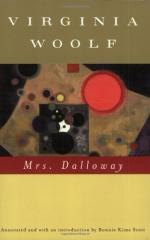|
This section contains 656 words (approx. 2 pages at 400 words per page) |

|
The New Modern Era
The nineteenth century ushered in developments that profoundly changed European society. Mercantilism and industrialism created a powerful new class. The cultural, political and economic might of this new class, the bourgeoisie or middleclass, soon overtook that of the aristocratic classes that had controlled nations and empires before. The spread of democracy and workers' rights movements also characterized the nineteenth century. It was not until after World War I (1914-1918), however, that a deep sense of how extremely and permanently European society had changed prevailed.
Mrs. Dalloway registers this sense of the end of an era. Clarissa's Aunt Parry, the aged relic who makes an appearance at Clarissa's party, represents this decline and this ending of an old way of life. The old woman likes to remember her days in Burma, a time and place suggestive of the height of British imperialism and colonialism. But...
|
This section contains 656 words (approx. 2 pages at 400 words per page) |

|




